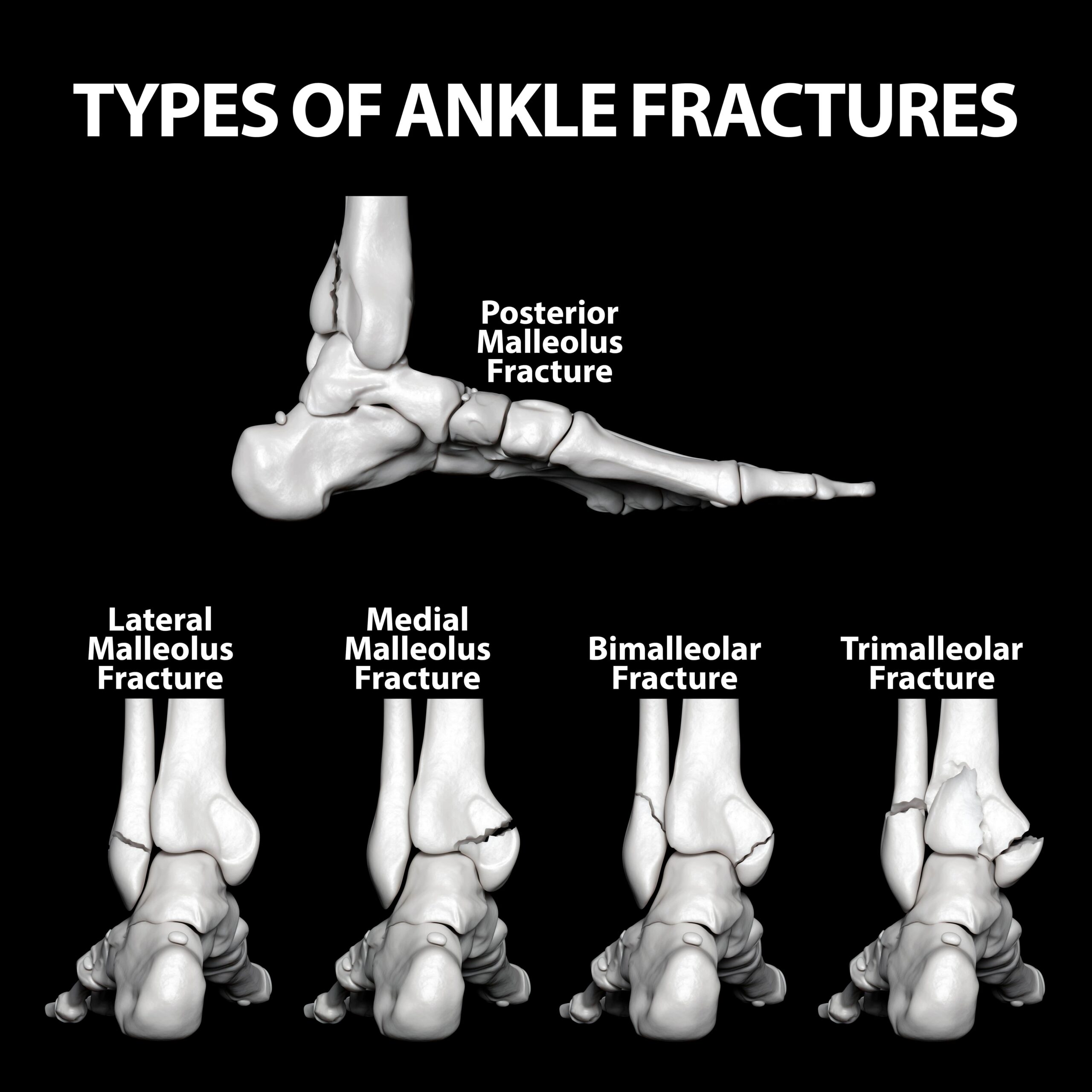

In this, conservative methods of treatment are used, which include medicines, braces, rest and physical therapy, allowing time for the fracture to heal on its own.Ĭonservative Treatment of Bimalleolar Ankle Fracture Treatment selection depends on the type and severity of the fracture and the condition of the patient. Treatment of bimalleolar ankle fracture includes conservative (non-surgical) and surgical approach. The possibility of nerve injury and other soft tissue injury must be evaluated to plan appropriate investigations and treatment. This often needs emergency medical assistance.


In case of displacement of bones, the treatment of bimalleolar ankle fracture would require joint reduction, in which the displaced bones are brought to their original position. Icing can be done for pain and swelling but is best avoided if there is a severe injury or if a complicated fracture is associated with dislocation or displacement. Resting the joint and elevating the leg is often advisable. The treatment of bimalleolar ankle fracture in case of fresh injury to the ankle joint, needs immediate treatment, which includes the following. If other soft tissue damage, ligament injuries or other fractures are suspected, additional scans like CT scan and MRI may be needed. It also gives an idea about the type and severity of bimalleolar ankle fracture. X-ray confirms a break in the bone, in this case, it is medial and lateral malleolus (inner and outer side of the ankle). In general, if there is pain and tenderness at the medial and lateral malleolus or if the person is unable to walk due to severe ankle pain and swelling, a fracture is suspected and X-ray is advisable. However, the Ottawa ankle rule protocol is followed to determine if the injury is a possible fracture or not, based on which an X-ray is ordered. More so, the diagnosis of bimalleolar ankle fracture can be typically confirmed by X-rays and other scanning investigations. As the symptoms are similar, it is difficult to differentiate between an ankle sprain and an ankle fracture. Examination of the ankle joint reveals pain, tenderness and swelling, which is evaluated to understand if it is a soft tissue injury or a fracture. The history often reveals an accident, fall or sports injury as the complaints begin soon following the injury.

In bimalleolar ankle fracture, there is fracture of both these parts, meaning it is a combination of both medial malleolus fracture and lateral malleolus fracture.ĭiagnosis of bimalleolar ankle fracture can be made based on the history, clinical examination and X-rays. The bump or prominence on the inner side of ankle, which is the lowermost part of tibia is called medial malleolus, while the bump on the outer side is called the lateral malleolus. The lower ends of both the bones, tibia and fibula form a joint called syndesmosis joint. Both the bones end with a bump on inner and outer side, which form a part of the ankle. The ankle joint is formed of two lower leg bones, tibia on the inner side and fibula on the outer side. Bimalleolar ankle fracture is called Pott’s fracture. Bimalleolar ankle fracture is a type of ankle fracture, in which both the inner and the outer end of the ankle break or develop a crack. Depending on the type of injury and the number of parts in which the bone breaks during an ankle fracture, it is classified into important types. Ankle fractures are a common event, which occur due to various causes, ranging from accidents to sport injuries. Ankle is one of the important joint, which bears weight of the body.


 0 kommentar(er)
0 kommentar(er)
